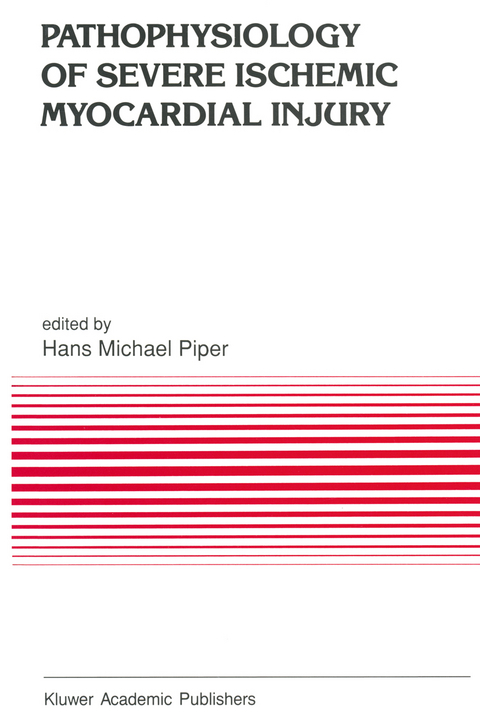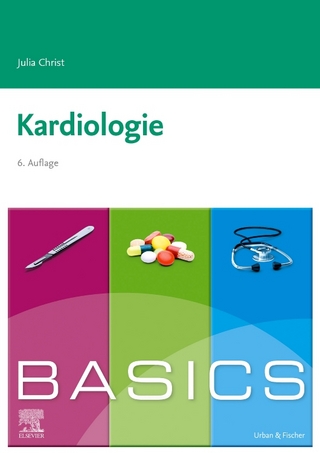
Pathophysiology of Severe Ischemic Myocardial Injury
Springer (Verlag)
978-94-010-6699-0 (ISBN)
In industrialized countries, ischemic heart disease is by far the most common organ-specific cause of death. The thrombotic occlusion of a coronary artery which had previously been severely altered by atherosclerosis, is the most frequent cause of ischemic deterioration of myocardial tissue, i. e. myocardial infarction. Death of the human individual occurs when myocardial ischemia causes a critical impairment of cardiac pump function. The failure of a heart with an ischemic area may be due to the amount and location of contractile tissue becoming paralyzed or even necrotic, or to arrhythmias provoked by the ischemic condition, or by a combination of both factors. Considerable progress has been made in the development of antiarrythmic therapy. Effective tools have been developed to reperfuse ischemic myocar dial tissue as soon as the patient reaches hospital. However, therapeutical principles for the ischemic-reperfused myocardium which would specifically interfere with the state of injury of the ischemic tissue at the onset of reperfusion, and avoid the apparent hazards of the reperfusion process itself, have yet to be established. But not only approved therapeutical concepts are lacking, the pathophysiology of myocardial cell injury in pro gressive ischemia and under reperfusion is in itself only partly understood.
I: Introduction.- 1. Irreversible ischemic injury: definition of the problem.- 2. Recovery of severely ischemic myocardium: a challenge for the clinical cardiologist.- II: The Role of Energy Deficiency.- 3. The critical ATP threshold hypothesis.- 4. Importance of glycolytically produced ATP for the integrity of the threatened myocardial cell.- III: The Search for Critical Cellular Structures.- 5. Loss of sarcolemmal integrity in ischemic myocardium.- 6. Mitochondrial injury in the oxygen-depleted and reoxygenated myocardial cell.- 7. Lysosomal integrity in ischemic, hypoxic and recovering heart.- IV: The Role of Lipids.- 8. Detrimental effects of fatty acids and their derivatives in ischemic and reperfused myocardium.- 9. Hydrolysis of phospholipids and cellular integrity.- 10. Eicosanoids and the ischemic myocardium.- V: The Role of Oxygen Radicals.- 11. Importance of free radicals generated by endothelial and myocardial cells in ischemia and reperfusion.- 12. The role of leukocytes in ischemic damage, reperfusion injury and repair of the myocardium.- 13. Problems associated with reperfusion of ischemic myocardium.- VI: The Role of Calcium.- 14. Subcellular calcium shifts in ischemia and reperfusion.- 15. Causes and effects of changes in cytosolic free calcium in the hypoxic myocardial cell.- VII: Mechanical Factors: Rigor and Contracture.- 16. Rigor and contracture, the role of phosphorus compounds and cytosolic calcium.- 17. Importance of mechanical factors in ischemic and reperfusion injury.- VIII: The Role of Endothelial Cells and Neurons.- 18. Sensitivity of the endothelium to hypoxia and reoxygenation.- 19. Release and effects of catecholamines in myocardial ischemia.- IX: Conclusions.- 20. Severe ischemic myocardial injury: Perspectives for therapy.
| Reihe/Serie | Developments in Cardiovascular Medicine ; 104 |
|---|---|
| Zusatzinfo | 440 p. |
| Verlagsort | Dordrecht |
| Sprache | englisch |
| Maße | 155 x 235 mm |
| Themenwelt | Sachbuch/Ratgeber ► Natur / Technik ► Garten |
| Medizinische Fachgebiete ► Innere Medizin ► Kardiologie / Angiologie | |
| ISBN-10 | 94-010-6699-X / 940106699X |
| ISBN-13 | 978-94-010-6699-0 / 9789401066990 |
| Zustand | Neuware |
| Haben Sie eine Frage zum Produkt? |
aus dem Bereich


